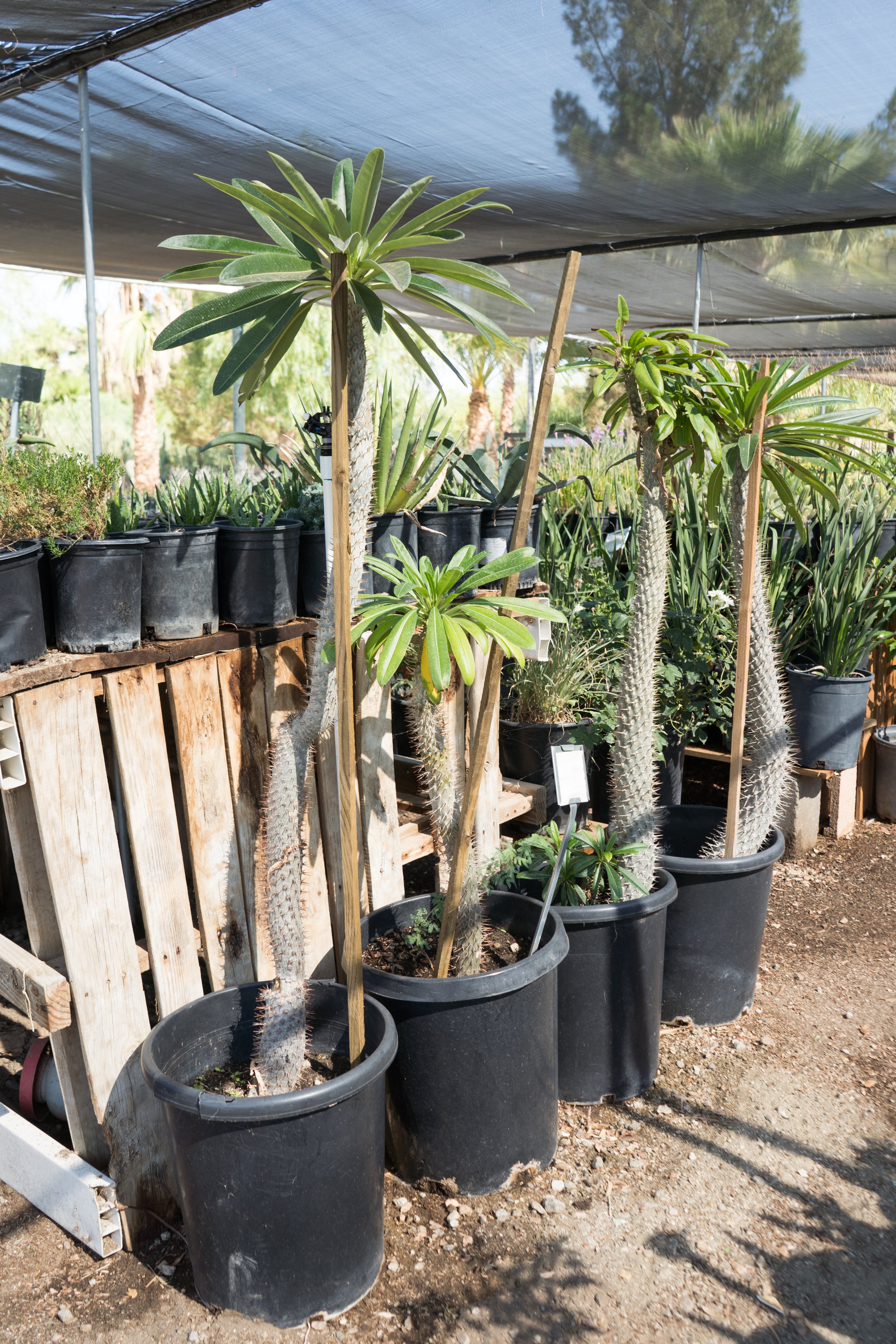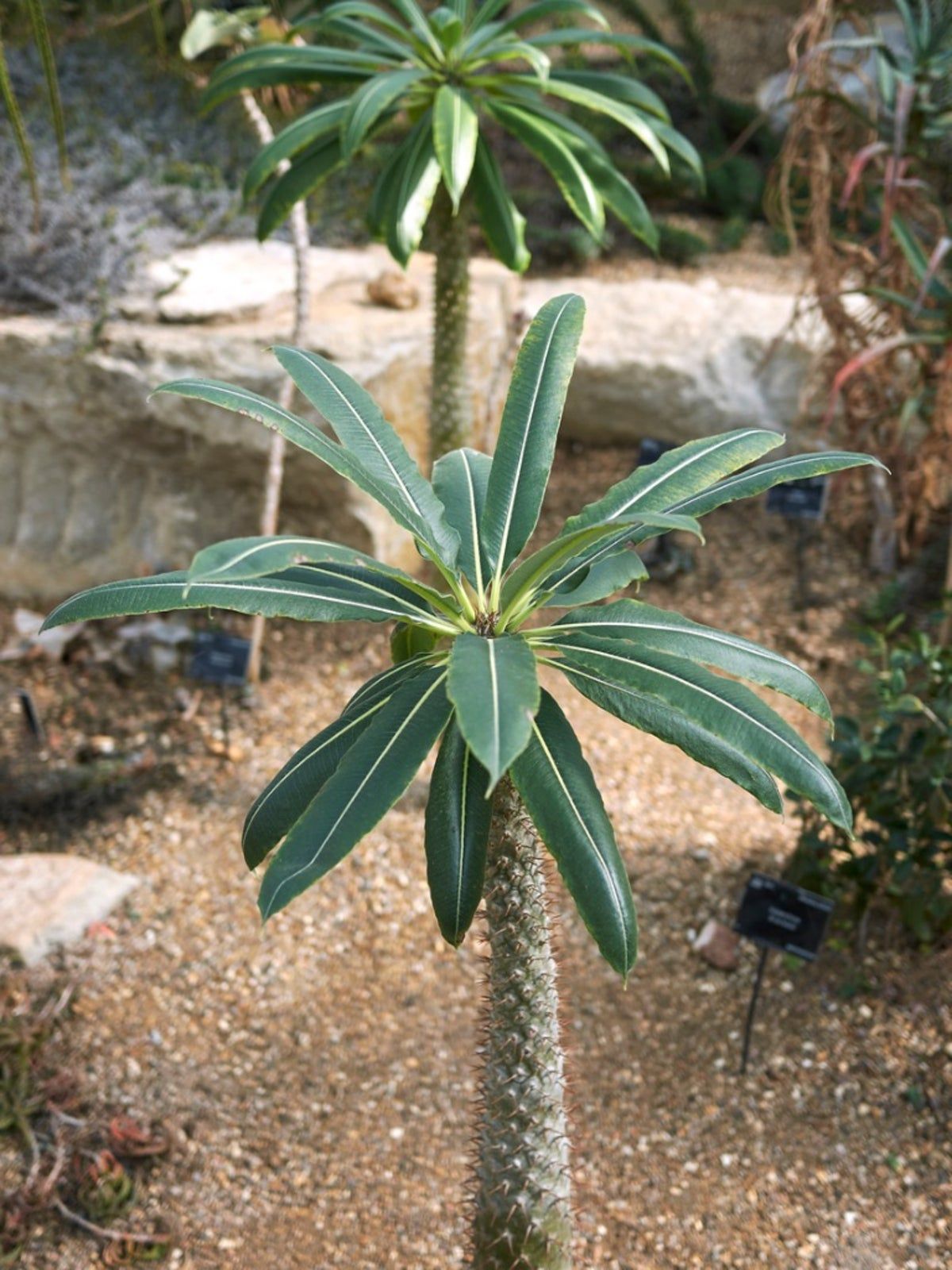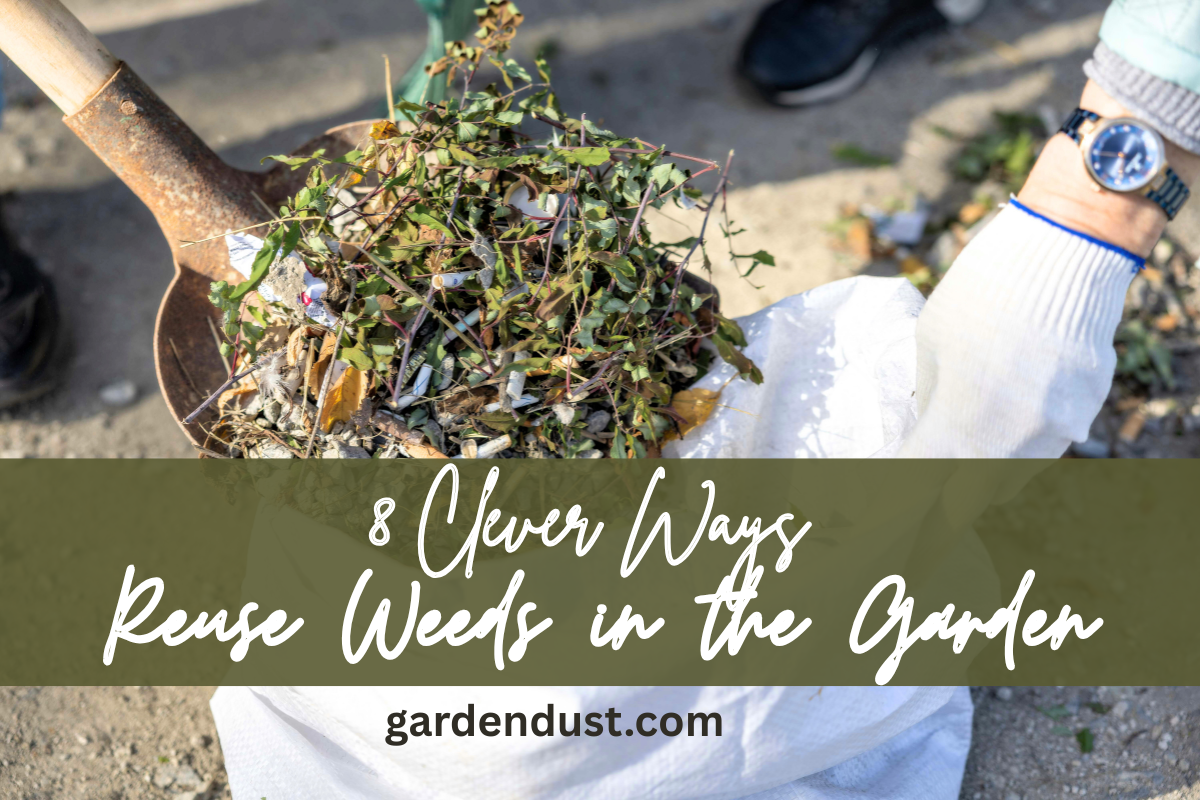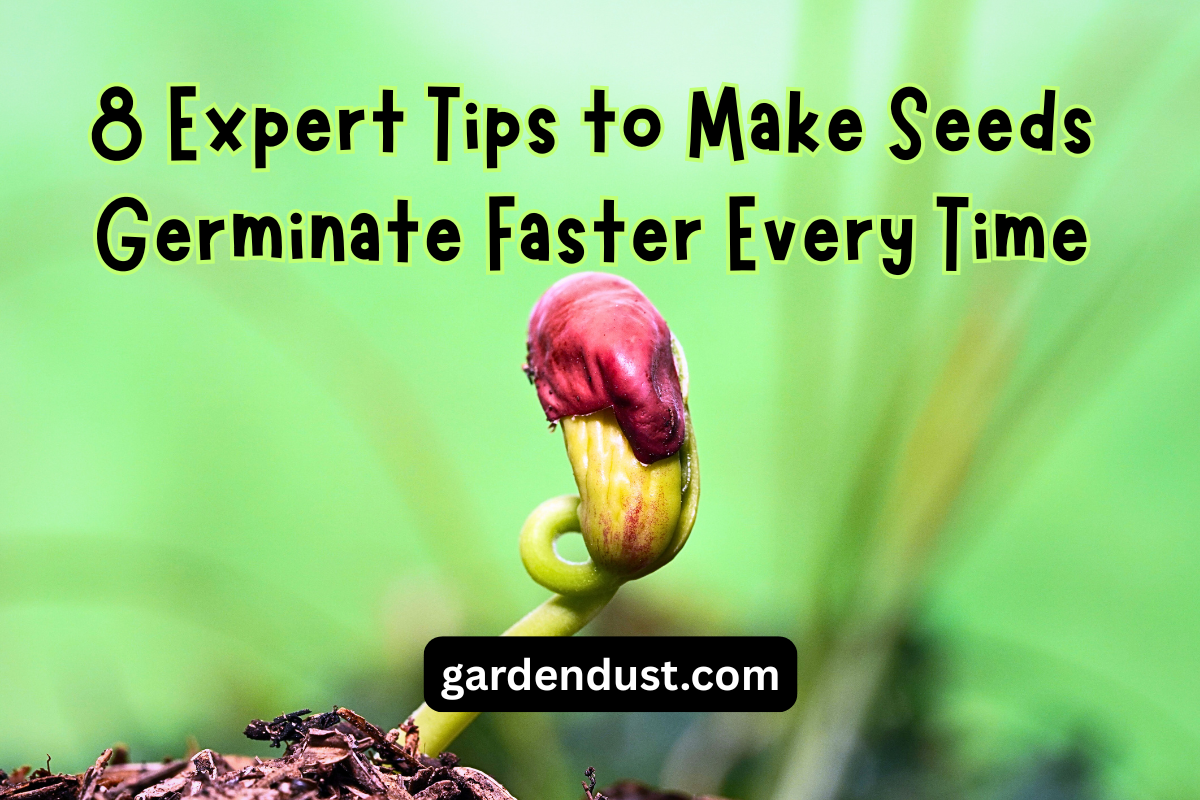how to Grow Madagascar Palm (Pachypodium lamerei)
The Madagascar Palm (Pachypodium lamerei) is not actually a palm at all, but rather a striking succulent native to the island of Madagascar. With its thick, spiny trunk crowned by a rosette of long, narrow green leaves, this unique plant makes a dramatic statement in any garden or indoor space. Despite its exotic appearance, the Madagascar Palm is surprisingly adaptable and relatively easy to care for with the right conditions.

Basic Information
- Scientific Name: Pachypodium lamerei
- Common Name: Madagascar Palm
- Family: Apocynaceae
- Native Region: Southwestern Madagascar
- Growth Rate: Slow to moderate (4-12 inches per year)
- Maximum Height: Can reach 20-30 feet in natural habitat, typically 6-10 feet as a houseplant
- USDA Hardiness Zones: 9b-11
Light Requirements
Madagascar Palm thrives in bright, direct sunlight – making it perfect for sunny spots in your home or garden:
- Outdoor Growing: Full sun (6-8 hours of direct sunlight daily)
- Indoor Growing: Place near a south-facing window for maximum light exposure
- Light Adaptation: In extremely hot regions, provide some afternoon shade if temperatures exceed 100°F
- Signs of Inadequate Light: Leggy growth, reduced leaf production
- Supplemental Lighting: If natural light is insufficient, use full-spectrum LED grow lights
Water Requirements
As a drought-tolerant succulent, proper watering is crucial for Madagascar Palm health:
- Watering Frequency: Allow soil to dry completely between waterings
- Method: Water thoroughly when soil is dry 2 inches deep
- Seasonal Adjustments:
- Spring/Summer: Water when soil surface is dry (approximately every 2-3 weeks)
- Fall/Winter: Reduce watering significantly (every 4-6 weeks)
- Signs of Overwatering: Soft, discolored trunk; yellowing leaves; root rot
- Signs of Underwatering: Wrinkled trunk; leaf drop; slow growth
💡 Pro Tip: It’s better to underwater than overwater your Madagascar Palm. These plants store water in their trunks and can tolerate drought better than excess moisture.
Soil and Potting
The right soil mix is crucial for Madagascar Palm health:
- Ideal Soil Mix: Well-draining, sandy soil with:
- 2 parts cactus/succulent potting mix
- 2 parts coarse sand or perlite
- 1 part peat moss or coco coir
- pH Level: Slightly acidic to slightly alkaline (6.1-7.8)
- Pot Requirements: Container with ample drainage holes
- Pot Size: Choose a pot that’s slightly larger than the root ball
- Repotting Frequency: Every 2-3 years or when rootbound
Temperature and Humidity
Madagascar Palms prefer warm conditions similar to their native habitat:
- Ideal Temperature Range: 65-85°F (18-29°C)
- Minimum Temperature: 40°F (4°C) – brief exposure only
- Cold Sensitivity: Protect from frost; bring indoors in colder climates
- Humidity Preference: Tolerates average to low humidity (30-50%)
- Air Circulation: Provide good airflow to prevent fungal issues
Fertilizing
Proper fertilization supports healthy growth:
- Fertilizer Type: Low-nitrogen, phosphorus-rich cactus/succulent fertilizer
- Application Rate: Dilute to half-strength
- Frequency:
- Growing Season (Spring/Summer): Every 4-6 weeks
- Dormant Season (Fall/Winter): No fertilizer needed
- Application Method: Apply after watering to prevent root burn
Safety Considerations
Be aware of the following safety aspects when growing Madagascar Palm:
- Toxicity: All parts contain toxic sap that can cause skin irritation
- Handling Precautions: Wear thick gloves when handling to avoid the sharp spines
- Pet Safety: Keep away from pets and children
- First Aid: If skin contact with sap occurs, wash immediately with soap and water

Common Problems and Solutions
Even with proper care, Madagascar Palms can encounter issues:
| Problem | Symptoms | Solution |
|---|---|---|
| Overwatering | Soft, discolored trunk; yellowing leaves | Reduce watering frequency; ensure proper drainage |
| Underwatering | Wrinkled trunk; leaf drop | Increase watering; ensure thorough watering |
| Scale Insects | Small brown bumps on stems/leaves | Remove with cotton swab dipped in alcohol; use insecticidal soap |
| Mealybugs | White, cottony masses in leaf joints | Same treatment as scale insects |
| Spider Mites | Fine webbing; stippled leaves | Increase humidity; spray with water; use insecticidal soap |
| Root Rot | Soft, discolored base; foul smell | Remove affected areas; repot in fresh soil; reduce watering |
Propagation Methods
Expand your collection with these propagation techniques:
Seed Propagation
- Collect seeds from mature flowers
- Plant in well-draining cactus soil
- Keep warm (70-80°F) and slightly moist
- Germination takes 2-4 weeks
- Growth is slow initially
Offsets/Pups
- Wait for plant to produce basal offsets
- When 3-4 inches tall, carefully cut away from parent
- Allow cut to callus for 2-3 days
- Plant in well-draining soil
- Water sparingly until established
Seasonal Care Guide
Adjust your care routine throughout the year:
Spring/Summer (Growing Season)
- Provide maximum sunlight
- Water when soil dries out
- Apply fertilizer every 4-6 weeks
- Monitor for pests
- Perfect time for repotting if needed
Fall/Winter (Semi-Dormant)
- Reduce watering significantly
- Stop fertilizing
- Maintain bright light
- Protect from drafts and cold
- Normal for some leaf drop to occur
Madagascar Palm as an Indoor Plant
When growing indoors, consider these additional tips:
- Location: Place near south or west-facing windows
- Rotation: Turn pot quarterly for even growth
- Humidity: No need for extra humidity; thrives in dry indoor air
- Cleaning: Wipe leaves occasionally to remove dust
- Winter Care: Keep away from cold drafts and heating vents
Flowering and Maturity
With proper care, Madagascar Palms can eventually flower:
- Flowering Age: Typically 10+ years old (mature plants)
- Flower Description: Large, white, trumpet-shaped blooms
- Blooming Season: Spring to early summer
- Flower Duration: Individual flowers last 1-2 days; clusters bloom over several weeks
- Pollination: In natural habitat, pollinated by moths and butterflies
Design and Display Ideas
Enhance your space with these Madagascar Palm display suggestions:
- Outdoor Landscapes: Makes a dramatic focal point in xeriscape or succulent gardens
- Container Gardens: Pair with low-growing succulents like Echeveria or Sedum
- Indoor Decor: Showcase in a decorative pot with a minimalist design
- Elevation: Place on a plant stand to highlight its architectural form
- Grouping: Create a tropical vibe by grouping with other drought-tolerant plants
Final Tips for Success
- Patience is key – Madagascar Palms are slow-growing and long-lived plants
- Consistent conditions lead to the best results
- Observe your plant regularly for early detection of issues
- Wear protective gloves when handling to avoid injury from spines
- Consider the plant’s mature size when selecting its permanent location
The Madagascar Palm represents a perfect blend of exotic beauty and practical resilience, making it an excellent choice for both novice and experienced plant enthusiasts. With its distinctive appearance and relatively straightforward care requirements, this remarkable succulent rewards growers with decades of architectural splendor. Whether showcased as a dramatic focal point in your garden or as a stunning indoor specimen, Pachypodium lamerei brings a touch of Madagascar’s unique botanical heritage into your living space. Happy Gardening….






